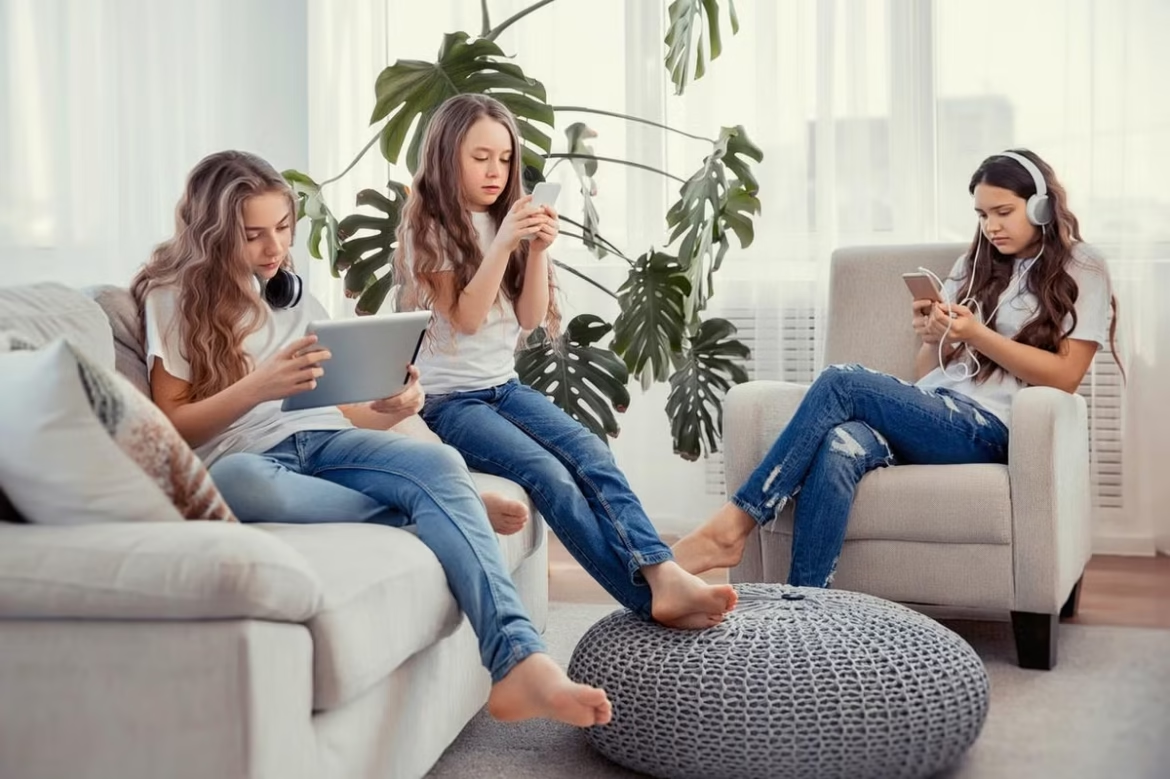
Introduction
Over the past two decades, social media has evolved from simple networking platforms to full-fledged ecosystems of influence, culture, and communication. In this digital transformation, women—particularly those often referred to as “social media girls”—have emerged as some of the most impactful figures shaping modern online culture. These women are not just users of technology but powerful creators of trends, entrepreneurs, and voices of change. The term “social media girls” refers to influencers, creators, models, activists, and everyday women who use platforms like Instagram, TikTok, YouTube, and X (formerly Twitter) to share their lifestyles, opinions, and passions with millions of followers.
The Rise of the Social Media Girl Phenomenon
The early 2010s marked a significant turning point with the introduction of photo-centric apps like Instagram. At that time, a new wave of young women began documenting their lives online—sharing fashion choices, beauty tips, and personal stories. What began as casual photo sharing quickly evolved into a movement of self-expression. Platforms like YouTube gave these women the opportunity to build deeper connections through long-form videos, while TikTok introduced a new generation of creators who could go viral overnight.
The Power of Personal Branding
What distinguishes Social Media Girl traditional celebrities is their mastery of personal branding. Each creator crafts a unique identity that resonates with a specific audience. Whether it’s a minimalist aesthetic, a focus on self-care, or comedic content, these women understand how to build a consistent visual and emotional identity. Personal branding has become an essential skill in the digital age, and many of these creators have turned their personal profiles into thriving businesses, launching fashion lines, makeup brands, or lifestyle products under their name.
Social Media as a Career Path
Today, being a social media girl is more than just a hobby—it’s a viable career. Many influencers earn a living through brand sponsorships, affiliate marketing, and collaborations. Some top creators earn six or seven figures annually. The rise of content monetization tools like YouTube Partner Program, TikTok Creator Fund, and Instagram Reels Bonuses has given women the ability to turn their creativity into sustainable income. This democratization of opportunity has allowed women from diverse backgrounds to thrive independently without traditional industry gatekeepers.
The Aesthetic Economy
One of the defining aspects of social media culture is the aesthetic economy—where visual presentation and personal style drive engagement. From curated Instagram feeds to TikTok makeup tutorials, social media girls have mastered the art of visual storytelling. They understand how to use lighting, composition, and editing tools to evoke emotion and build connection. This attention to detail has influenced fashion, interior design, and even travel industries, as brands increasingly look to influencers to represent their products authentically.
Empowerment and Representation
Social media has provided women with an unprecedented platform for empowerment and representation. In the past, media portrayals of women were largely controlled by traditional industries. Now, women can tell their own stories directly to their audience. This has created space for more inclusive representation across body types, ethnicities, and lifestyles. Social media girls often use their platforms to advocate for causes such as mental health, body positivity, feminism, and environmental awareness.
The Pressure of Perfection
While social media offers empowerment, it also introduces unique pressures. Many creators feel the constant need to maintain perfection—physically, emotionally, and professionally. The algorithm rewards consistent posting and engagement, leading to burnout and anxiety. The curated nature of online content can also create unrealistic beauty standards and a false sense of comparison among followers. Balancing authenticity and presentation remains one of the greatest challenges for social media girls today.
The Business Behind Influence
Behind the glamour of influencer culture lies a well-structured business model. Social media girls collaborate with agencies, negotiate contracts, and manage personal brands much like entrepreneurs. Brands view these influencers as marketing assets capable of driving sales through relatable storytelling. Product launches and brand partnerships are carefully timed to align with audience interests, creating mutually beneficial relationships between companies and creators.
The Role of Authenticity
Authenticity has become the new currency of influence. Audiences today crave realness and vulnerability. Social media girls who share both their successes and struggles often develop deeper trust with followers. Whether it’s discussing mental health, showing behind-the-scenes moments, or addressing criticism, authenticity humanizes influencers in a digital world filled with filters and polish.
Social Media Girls as Cultural Trendsetters
From fashion trends to slang, social media girls have become primary drivers of pop culture. Viral challenges, makeup trends, and even political discussions often originate from influencer circles. What begins as a small trend in one corner of TikTok can quickly spread across the world, influencing consumer behavior and societal conversations. Their ability to shape culture so rapidly reflects the power of digital communication and community building.
The Intersection of Technology and Creativity
The success of social media girls depends heavily on their ability to adapt to technological innovation. From mastering new platform algorithms to using artificial intelligence for content creation, these women are at the forefront of the digital revolution. Editing software, analytics tools, and AI-driven recommendation systems have become integral to their creative processes. Their adaptability ensures that they stay relevant in a fast-paced and ever-evolving digital environment.
The Dark Side of Fame
With popularity comes scrutiny. Many social media girls face online harassment, privacy invasions, and cyberbullying. The anonymity of the internet often encourages toxic behavior from users, making digital safety a growing concern. Some creators have even taken breaks from platforms to prioritize mental well-being. As the industry matures, conversations around online ethics, consent, and data privacy have become increasingly important.
The Globalization of Influence
The social media girl phenomenon is not limited to Western countries. From South Korea’s beauty influencers to India’s fashion bloggers, women around the globe are using digital platforms to share their voices. Cultural diversity within the influencer community has expanded global fashion trends, beauty ideals, and entertainment tastes. This international influence highlights how interconnected modern culture has become through digital media.
Collaboration and Community
While competition exists, collaboration remains a key element of success. Social media girls often collaborate through podcasts, joint videos, and meetups to expand their reach. These partnerships not only strengthen their influence but also create supportive communities where creators share experiences and advice. Networking and mentorship have become essential tools for women navigating the evolving world of digital entrepreneurship.
The Future of Social Media Girls
As artificial intelligence and augmented reality continue to shape digital platforms, the role of social media girls will evolve further. Virtual influencers—AI-generated personas with realistic features—are already entering the scene, blurring the lines between human and digital identity. However, genuine human connection will remain irreplaceable. The future will likely see a hybrid model where authenticity, storytelling, and technology coexist harmoniously.
Educational and Social Influence
Beyond fashion and beauty, social media girls are increasingly using their platforms for education and activism. From promoting environmental awareness to discussing financial literacy, they’re diversifying their influence to address meaningful issues. Many young audiences learn about self-care, social justice, and entrepreneurship through these creators, reflecting the growing educational role of social media.
The Shift Toward Long-Form Content
While short-form videos dominate the current landscape, there’s a growing return to long-form storytelling. Platforms like YouTube and podcasts offer more space for in-depth conversations and connection. Social media girls are using these mediums to build stronger communities, discuss real-world issues, and establish credibility beyond visual appeal.
Monetization and Brand Ownership
Many influencers are transitioning from brand partnerships to brand ownership. Instead of promoting other companies’ products, they’re launching their own lines in skincare, fashion, or wellness. This shift reflects a deeper entrepreneurial mindset, where social media girls leverage their audience trust to build long-term businesses. Managing privacy has become a delicate task for social media girls. While sharing personal experiences fosters connection, oversharing can lead to public intrusion. Successful influencers have learned to establish healthy boundaries, keeping certain aspects of their lives offline while maintaining transparency with their followers.
Conclusion
The story of social media girls is ultimately a story of empowerment, creativity, and evolution. They have redefined how success, beauty, and influence are perceived in the digital age. Through authenticity, resilience, and innovation, these women continue to shape not only social media culture but also global conversations around identity and representation. As technology progresses, their influence will remain a defining feature of how the modern world communicates, learns, and connects.
You May Also Read: TLK Fusion Complaints
